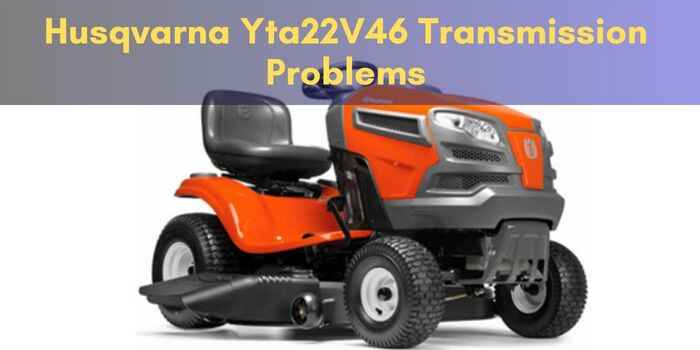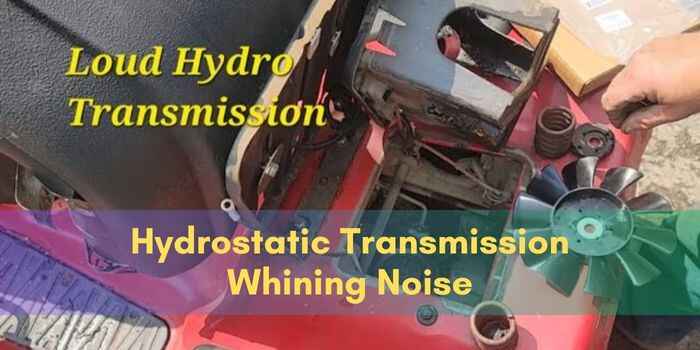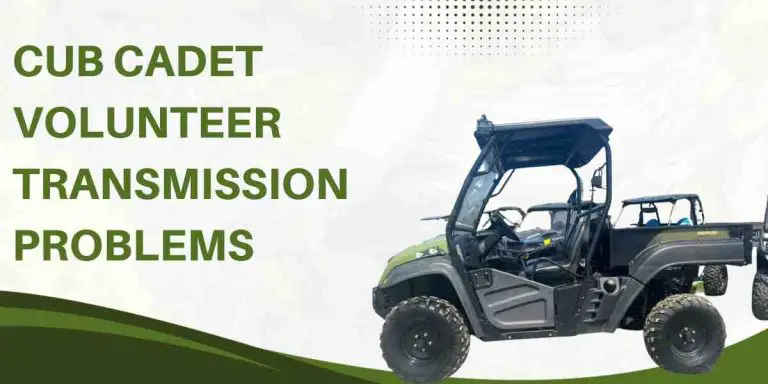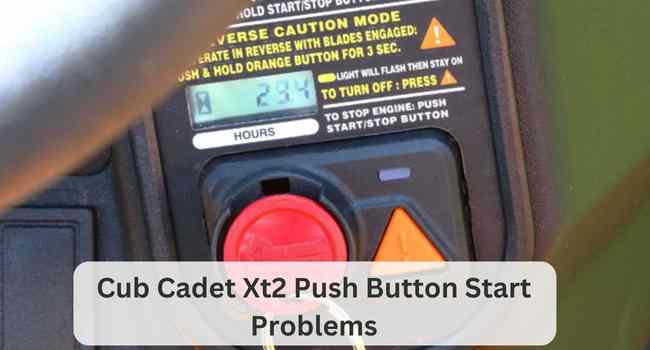Husqvarna Yta22V46 Transmission Problems: Troubleshooting Guide
If you are experiencing transmission problems with your Husqvarna Yta22V46, common signs include grinding gears, starting and stopping during operation, and the wheels not rotating with the pulley.
To diagnose a bad hydrostatic transmission, start by visually checking the hydraulic system, inspecting the oil level and hoses for damage or leaks.
Ensure proper maintenance for long-term performance and address any issues promptly.
Introduction To Husqvarna Yta22V46 Transmission Problems
Having trouble with your Husqvarna Yta22V46 transmission? Look out for issues such as difficulty shifting gears, transmission fluid leaks, and gear slipping, which can indicate transmission problems.
Be sure to diagnose and address these issues promptly to keep your lawn tractor running smoothly.
Brief Overview Of The Husqvarna Yta22V46 Lawn Tractor:
- The Husqvarna Yta22V46 lawn tractor is a popular choice for homeowners with medium to large-sized lawns.
- It features a powerful engine, a wide cutting deck, and a comfortable seat, making it suitable for tackling various mowing tasks.
- The key highlight of this lawn tractor is its transmission system, which ensures smooth and efficient operation.
Importance Of A Properly Functioning Transmission For A Smooth Operation:
- The transmission is a vital component of any lawn tractor as it is responsible for transferring power from the engine to the wheels.
- A properly functioning transmission ensures that the blades rotate at the desired speed, allowing for an even and precise cut.
- It also enables the lawn tractor to move forward, backward, and maneuver smoothly, providing ease of use to the operator.
- A smooth operation provided by a well-functioning transmission ensures a consistent and professional-looking lawn.
Now that we have understood the basic overview of the Husqvarna Yta22V46 lawn tractor and the importance of a properly functioning transmission, let’s further explore the transmission problems that can occur with this model.
Signs Of Husqvarna Yta22V46 Transmission Problems
Grinding gears, starting and stopping during operation, and the wheels not rotating with the pulley are common signs of Husqvarna Yta22V46 transmission problems.
Grinding gears and unusual noises during operation:
- Grinding gears: If you hear grinding or clunking noises when operating your Husqvarna Yta22V46 tractor, it is a clear indication of transmission problems. This can occur when shifting gears or during operation.
- Unusual noises: Apart from grinding gears, any other unusual noises like whining, squealing, or knocking can also suggest transmission issues. These sounds may occur while the tractor is in motion or when starting or stopping.
Difficulty in starting or stopping the tractor:
- Starting issues: If you find it challenging to start the tractor, even after multiple attempts, it could be a sign of a transmission problem. This can happen due to faulty gears or a malfunctioning clutch.
- Stopping problems: Similarly, when you experience difficulty in stopping the tractor, it indicates transmission trouble. Your tractor may not respond properly when you engage the brakes, making it unsafe to operate.
Wheels not rotating with the pulley:
- Lack of wheel rotation: If you notice that the wheels of your Husqvarna Yta22V46 tractor are not rotating properly when the pulley is engaged, it is a clear sign of transmission malfunction. This can occur due to issues with the drive belt, pulley, or internal transmission components.
- Reduced traction: Another symptom of transmission problems is reduced traction. If the tractor struggles to move forward or lacks power while climbing hills or navigating uneven terrain, it indicates issues with the transmission.
When you encounter any of these signs, it is crucial to address them promptly to prevent further damage to your Husqvarna Yta22V46 tractor’s transmission.
Consulting a professional technician or authorized dealer is recommended to accurately diagnose and resolve the issues.
Troubleshooting Steps For Husqvarna Yta22V46 Transmission Problems
If you’re experiencing transmission problems with your Husqvarna Yta22V46, follow these troubleshooting steps to address issues such as difficulty shifting gears, gear slipping, or transmission fluid leaks. Take action to ensure your mower’s transmission is in good working order.
If you’re experiencing issues with the transmission on your Husqvarna Yta22V46 lawn tractor, there are several troubleshooting steps you can take to identify and resolve the problem. Follow these steps to get your transmission running smoothly again:
Step 1: Perform A Visual Inspection Of The Hydraulic System
- Check the oil level and add oil if needed: Ensure that the transmission oil is at the appropriate level. If it is low, add the recommended transmission oil.
- Inspect hoses and connections for damage or leaks: Look for any visible signs of damage or leaks in the hoses and connections of the hydraulic system. If you find any issues, repair or replace the damaged components.
Step 2: Purge The System To Remove Any Air Bubbles
To ensure proper functioning of the transmission, it is important to purge any air bubbles that may have accumulated in the system. Follow these detailed instructions to purge the air from the transmission:
- Park the tractor on a flat, level surface and engage the parking brake.
- Start the engine and let it run for a few minutes to warm up.
- Locate the purge valve on the transmission unit.
- Slowly turn the purge valve counterclockwise to open it and release any trapped air. Keep the valve open until a steady stream of transmission oil is observed.
- Once a steady stream of oil is flowing, close the purge valve by turning it clockwise.
Step 3: Check The Condition Of The Transmission Belt
Inspect the transmission belt for any signs of wear or damage. Over time, the belt may become worn out or damaged, leading to transmission problems.
If you notice any issues with the belt, follow these steps to properly replace it:
- Park the tractor on a flat surface and engage the parking brake.
- Use a wrench to loosen the belt tensioner pulley and remove the old belt.
- Install a new belt by threading it over the transmission pulley and the engine pulley, following the manufacturer’s instructions.
- Use the wrench to tighten the belt tensioner pulley, ensuring that the belt is properly tensioned.
Step 4: Examine The Brake Lever And Linkage
The brake lever and linkage play a crucial role in the proper operation of the transmission. Make sure that the brake lever is properly engaged and disengaged.
Additionally, check the linkage for any obstructions or malfunctions that may be affecting the transmission’s performance.
Step 5: Verify The Condition Of The Oil Port And Fill Plug
The oil port and fill plug are important components of the transmission system. Access the oil port and fill it with the recommended transmission fluid. Ensure that the oil port and fill plug are in good condition and tightly sealed to prevent any leaks.
Step 6: Inspect The Magnet And Plug In The Transmission
The magnet and plug in the transmission help to collect and remove any metal debris that may have accumulated over time. Regularly clean the magnet and plug to ensure optimal transmission performance and prevent damage to the internal components.
By following these troubleshooting steps, you can address common transmission problems with the Husqvarna Yta22V46 lawn tractor and get it back up and running smoothly. However, if the issues persist, it is recommended to consult a professional for further assistance.
Common Problems With Hydrostatic Transmissions
If you’re experiencing Husqvarna Yta22V46 transmission problems, common issues with hydrostatic transmissions include difficulty shifting gears, transmission failure to engage, gear slipping, and fluid leaks.
Let’s explore some common hydrostatic transmission problems on the YTH22V46 and how to address them:
1. Loss of Power:
- Symptoms: The mower struggles to maintain speed, especially on inclines.
- Causes: This could be due to low transmission fluid, a worn drive belt, or a failing transmission pump.
- Solutions:
- Check the transmission fluid level and top it off with the recommended type (refer to your owner’s manual).
- Inspect the drive belt for wear and cracks. Replace it if necessary.
- If the above solutions don’t work, consult a qualified technician for transmission pump inspection or replacement.
2. Jerky Movement:
- Symptoms: The mower jerks or surges while moving.
- Causes: Air in the hydrostatic system, dirty transmission fluid, or a malfunctioning pump can cause this erratic movement.
- Solutions:
- Refer to your owner’s manual for instructions on purging air from the hydrostatic system.
- Change the transmission fluid and filter using the recommended products.
- In severe cases, a technician might need to diagnose and repair the pump.
3. Mower Not Moving:
- Symptoms: The mower doesn’t respond to pedal movement at all.
- Causes: This could be due to a disengaged drive belt, a completely seized transmission, or electrical issues with the pedal sensors.
- Solutions:
- Check if the drive belt has come off the pulleys and ensure proper tension.
- Unfortunately, a completely seized transmission might require replacement.
- A technician can diagnose electrical problems and repair or replace faulty sensors.
Overview Of other Common Issues With Hydrostatic Transmissions:
- Fluid leaks: Leaks in the hydraulic fluid can occur in the seals, hoses, or connections of the hydrostatic transmission. These leaks can lead to a decrease in performance and potential damage to the transmission if not addressed promptly.
- Overheating: Constant use without proper cooling can cause the hydrostatic transmission to overheat. This can lead to a breakdown of the fluid and damage to the internal components of the transmission.
- Inconsistent speed control: A common problem with hydrostatic transmissions is inconsistent speed control. This can be due to issues with the control valve or a faulty sensor, causing the transmission to engage or disengage intermittently.
- Foaming fluid: If the hydraulic fluid in the hydrostatic transmission becomes foamy or aerated, it can result in reduced lubrication and ineffective transmission operation. This can lead to excessive wear and premature failure of the transmission.
Importance Of Regular Maintenance For Prolonged Lifespan:
- Preventive maintenance: Regular maintenance, such as checking the fluid levels, inspecting for leaks, and cleaning or replacing filters, can help prevent problems with hydrostatic transmissions. Performing routine maintenance ensures that the transmission operates at its best and helps extend its lifespan.
- Fluid changes: Regularly changing the hydraulic fluid and using the manufacturer’s recommended fluid type can improve the overall performance of the hydrostatic transmission. Fresh fluid provides better lubrication, cooling, and overall functionality.
- Cleaning and inspection: Cleaning and inspecting the transmission components, such as the filter, cooling fins, and bypass valves, help maintain proper operation and identify any potential issues early on. This allows for timely repairs and avoids major breakdowns.
- Belt and pulley maintenance: Checking the belt tension, alignment, and condition, as well as inspecting the pulleys for any damage or wear, should be part of regular maintenance routines. Proper belt and pulley function contribute to the smooth operation of the hydrostatic transmission.
- Regular servicing by professionals: Periodic servicing by qualified technicians ensures that any hidden or potential problems with the hydrostatic transmission are identified and addressed promptly. Professionals have the expertise to diagnose issues accurately and provide necessary repairs or replacements.
Frequently Asked Questions
How Do I Know If My Lawnmower Transmission Is Bad?
If your lawnmower’s transmission is bad, you may notice grinding gears, starting and stopping during operation, and the wheels not rotating with the pulley.
What Transmission Is In Yta22V46?
The transmission in the yta22v46 is a hydrostatic transmission commonly found in lawn mowers.
How Do You Diagnose A Bad Hydrostatic Transmission?
To diagnose a bad hydrostatic transmission, watch out for signs like grinding gears, starting and stopping during operation, and wheels not rotating with the pulley. Complete a visual check of the hydraulic system, inspect hoses and connections for damage or leaks, and add oil if needed.
Fix any issues with maintenance and take prompt action at the first sign of trouble.
What Is A Common Problem With Hydrostatic Transmission?
Common problems with hydrostatic transmission include temperature control issues, pre-charging problems, over-pressure protection failures, and the need for regular maintenance.
Signs of trouble include grinding gears, starting and stopping during operation, and wheels not rotating with the pulley. Troubleshooting should begin with a visual check of the hydraulic system, checking the oil level, inspecting hoses and connections for damage or leaks.
Quick action is needed at the first sign of trouble.
Conclusion
Considering the issues that can arise with the Husqvarna Yta22V46 transmission, it’s important to keep an eye out for any signs of trouble.
Some common problems include difficulty shifting gears, the transmission failing to engage or disengage, gear slipping, transmission fluid leaks, and noisy operation.
If you notice any of these issues, it may be an indication that your transmission requires attention.
To diagnose a bad hydrostatic transmission, start with a visual check of the hydraulic system, inspect the oil level and connections for damage or leaks, and ensure proper maintenance is being conducted.
It’s crucial to address any transmission problems promptly to prevent further damage. By taking appropriate action at the first sign of trouble, you can ensure long-term performance and reliability from your Husqvarna Yta22V46.





